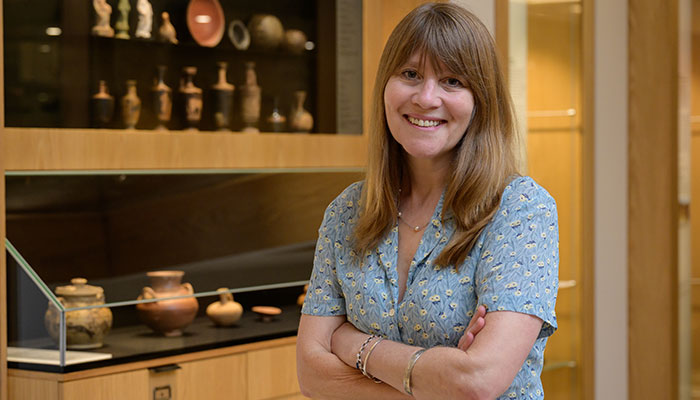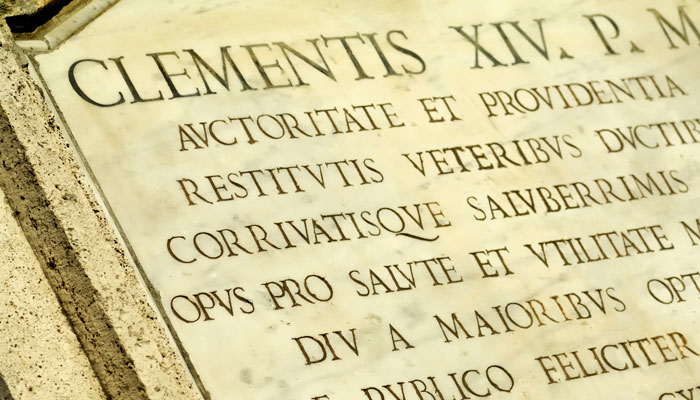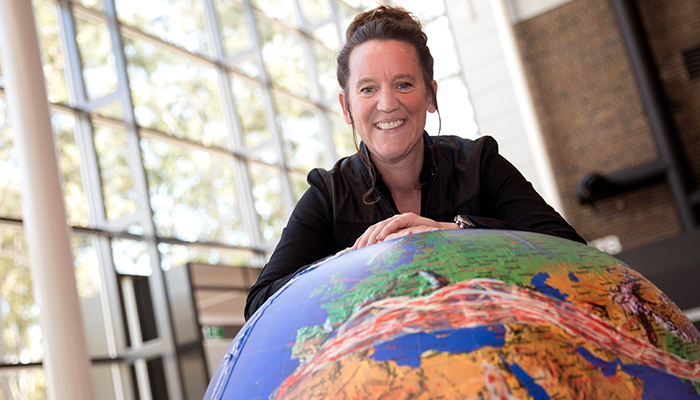An ancient tomb fragment that was stolen from Egypt, and believed lost to the world, has been discovered at Macquarie University’s Museum of Ancient Cultures.
Video journalist: Sophie Gidley
The fragment, a 30cm high by 31cm wide limestone slab featuring a series of carved hieroglyphs, was identified as a stolen artefact by Egyptologist, Professor Martin Bommas, soon after he arrived to take up the position of Director of the Museum of Ancient Cultures, in late 2018.
As one of only approximately 150 people around the world who can expertly read hieroglyphs, Professor Bommas recognised the fragment as the long-lost fourth, and final, piece of the prized Sheshn Nerfertem stela (a inscribed slab of stone or wood) from the tomb of a temple administrator who lived during Egypt’s Thirtieth Dynasty, between 380-332BC.
“The Thirtieth Dynasty was before the conquest of Egypt by Alexander the Great,” says Professor Bommas. “During this era, Egypt was at its cultural peak. And the execution of this stela makes it one of the best we have, quality-wise, from that time.”
The theft led to a big change in how Egyptians dealt with foreign missions
The Sheshn Nefertem stela has a curious footnote in the history of archaeology. It was originally discovered as four separate fragments by a mission from the Sapienza University of Rome during an excavation at the Cemetery of al-Asassif, on the western bank of Luxor, between 1976 and 1988. However, it gained notoriety in 1994 after the fragments were stolen from storage at Qurna museum in Luxor, before being spirited out of the country.
The theft of these culturally significant items had ongoing repercussions in the field, says Professor Bommas. Previously, archaeologists who had found artefacts in Egypt could access and assess them at will.
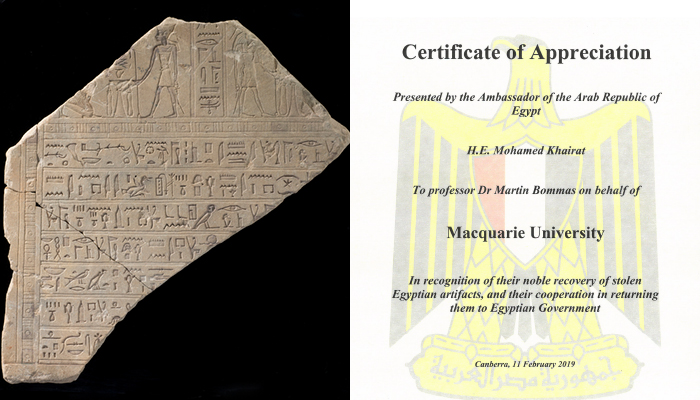
Turning back time: The original stela fragment (left) and the Certificate of Appreciation sent to Professor Bommas following the repatriation of the artefact to Egypt. Credit: Effy Alexakis, Photowrite.
“[From then on] archaeologists had to apply for the right to re-assess artefacts for research and documentation. The theft led to a big change in how Egyptians dealt with foreign missions,” he says.
Fortunately, three of the four stela fragments were discovered in Switzerland in 2017, and after political pressure, were returned to Egypt. However, the location of the final piece remained a mystery until Professor Bommas’ discovery. Investigations revealed the fragment was gifted to the university in 1995 by an individual who had bought it for $5000 from collectors with known connections to Switzerland. Mistakes were made. “We did not pay, but we accepted the donation without asking questions,” he says.
After identifying the stolen fragment, Professor Bommas immediately instigated its repatriation to Egypt via the Egyptian Embassy in Canberra. And, in doing so, he secured the University’s reputation as an exemplar of returned artefacts.
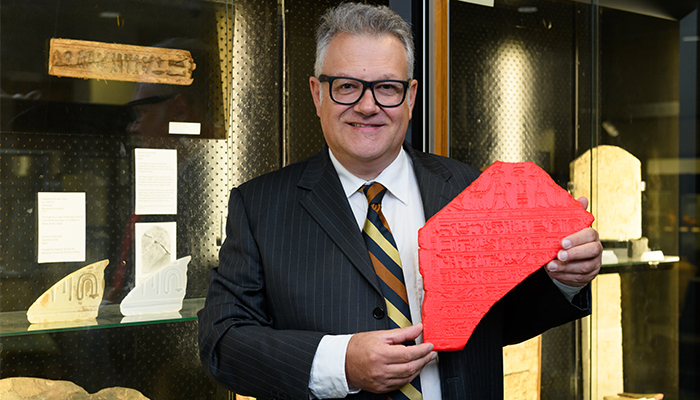
Hidden talent: Professor Martin Bommas - pictured with a red replica of the fragment - can expertly read hieroglyphs and identified the artefact as stolen.
“There is a lot at stake here. We can only build a business if we continue to stand morally in high ground. We want to continue working with international organisations to dry out the swamp of stolen and fake pieces. Returning objects is a key aspect of our work,” he says.
Shaaban Abdel Gawwad, the general supervisor at Egypt’s Department of Restored Antiquities, has said that the entire stela is to be restored and put on display at the Egyptian Museum in Cairo. This is anticipated to be in 2019-2020.
- Unearthing museum fakes is critical for setting the historical record straight
- Prehistoric mummy reveals ancient Egyptian embalming ‘recipe’ was around for millennia
Professor Bommas is now turning his attention to building a new, state-of-the-art Faculty of Arts Museum. A merger of the Museum of Ancient Cultures and the Australian History Museum, it is set to open mid-2020 with 16,000 pieces in its collection. Located on the ground floor of the new Arts Precinct, it will feature huge glass windows with views into the curatorial space.
“It will be the first campus history museum in the world based on social history,” says Professor Bommas. Uniquely, it will display historical artefacts and employ the skills of the university’s social researchers to tell compelling stories of people behind the artefacts.
And central to the display will be a 3D print of the Sheshn Nerfertem stela... in Ferrari Red to draw people towards it, so its story can be told.
Professor Martin Bommas is the Director of the Museum of Ancient Cultures at Macquarie University.
This article was first published on 11 April, 2019.

